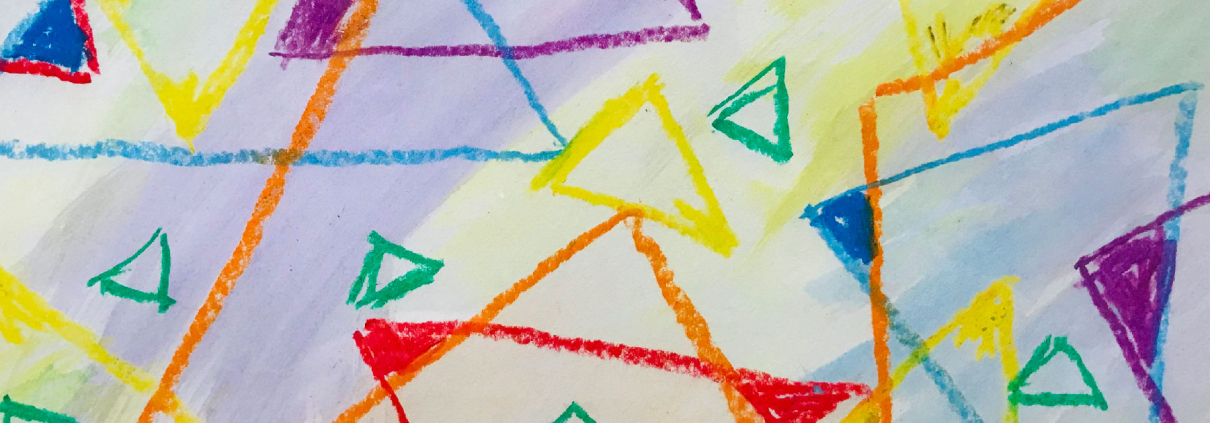‘Dancing Triangles: giving shape to faith, hope and love’
Andrew Collis
Mission Lab
Sydney Presbytery, Glebe Hall
April 20, 2024
Thinking in threes is usually a good idea, not least as a means of overcoming binary thinking. In trinitarian mode, thinking in threes is ever dynamic, inter-related, more like dancing in threes. Thinking and dancing in threes means creating space, giving shape to faith, hope and love.
Congregation-community-garden
I appreciate distinctions between places we call home, places of work and “third places” of recreation (Ray Oldenburg) – I love my local cafes – and agree that churches can be third places (and sponsor third places) for all manner of refreshment, connection, neighbourly activity, “hanging out”. I affirm this.
Theologically, however, is church itself not a place to live, work and experience connection? Is Christ not co-habitant, co-worker and neighbour/stranger? Is church not, in the best sense of these terms, familiar/familial, demanding/rewarding and inspiring?
Our church website and weekly activities follow a threefold pattern/choreography: congregation-community-garden. The hyphens are significant. (We’ve also considered the mission of God in musical figures such as the I-IV-V progression … “three chords and the truth” …)
Church – familiar/familial (home), demanding/rewarding (hard work in many ways), inspiring (so much happens between home and places of work) – stretches us … into something like big, colourful, overlapping triangles … congregation-community-garden … we pray, we serve, we grow … tend and attend to, delight in … peculiar expressions, embodiments of Christ …
Church stretches us … inviting faithful and creative (ever expansive) description/experience of faith, hope and love … believing/trusting, hoping/grieving, loving/making … together (all ages, teaching and learning together).
SSUC has found it helpful to imagine congregational life alongside community service (a monthly newspaper and social enterprise, regular art workshops and exhibitions, poetry and more), and inside ecological witness on Gadigal Ngura/Country.
All of it church. All of it practice, an exercise in becoming the body of Christ: a congregation in a community with a garden … a garden sustaining a community with a congregation … a community enfolding a congregation enfolded by a garden …
Liberation
In liberation theology, the church as Christ’s body emphasises the active role of the church in eco- and social justice movements. Just as Jesus identified with the marginalised and oppressed, the church is called to advocate for liberation.
This understanding emphasises solidarity with the oppressed (those most at risk of violence and exclusion, homelessness, isolation), working towards social, economic and ecological liberation. The church – dancing triangles, Messiah-dancer – is an instrument of God’s transformative power, actively engaged in addressing systemic injustices and promoting the reign or kindom of God on/in the earth.
Whatever sociological terms we find useful regarding the church as a place of connection/inspiration, neutrality risks unfaithfulness. As does the reduction of church to one or other ministry activity (however interesting or engaging).
The body of Christ is never neutral.
As members of this body, we pray (for liberation and release), we serve (with others committed to freedom, equity and peace), we grow (in wisdom – alive to many traditions, ancient and contemporary expressions of wisdom, philo-Sophia) …
Gadigal artist Konstantina writes: “We believe in Gumada of our ancestors, in the magic of our Land, in the harmony Spirit provides to us when we are deeply in tune with all living things.”
We may discern here a threefold choreography … and certain “christological” values: unity, solidarity, love, justice, service, compassion, transformation.
At SSUC, we are “growing into belonging” – the garden of our dreams on Gadigal land is called Mirrung (Belonging) … a name that invites repentance, and respect for the sovereign and unceded land of the Gadigal. Who and what truly belongs here? In what modes of belonging? Who are the hosts? Who are the guests?
We are learning, for example, to seek advice and guidance from Elders and traditional knowledge holders. It’s likely we’ll go on learning to listen and to let go, relinquish control and make reparation. There is much good work to do.
If the church is the body of Christ then the third place between church as home and church as work/task is an awe-inspiring place marked by history and state-sanctioned violence: colonialism, capitalism, militarism, kyriarchy, patriarchy … wherein lies the Spirit/Gumada or dangerous memory of Jesus (Johann Baptist Metz).
The third place is political (resisting apolitical spiritualism).
When it comes to presentation/embodiment of “good news for the poor”, there is much to consider – to rethink/revise. In what ways is the church (re)producing and (re)enforcing unjust or oppressive structures?
Contention and resistance
Homi Bhaba’s postcolonial “third space” of contention and resistance is apposite – a space outside establishment structures of power and authority where marginalised individuals and communities can come together to challenge oppression and work towards liberation.
This third space emerges at the margins where the voices of the poor are often silenced or ignored. (The late Trevor Davies, founding editor of the SSH, worked as a street sweeper in Darlington, Chippendale and Redfern.)
The church, as the body of Christ, can serve as a potent manifestation of this third space by providing a platform for marginalised individuals and communities to come together, find solidarity, and collectively resist systems of injustice. People from diverse backgrounds can gather to share their experiences, support one another, publish, paint, sing, dance, till, plant, harvest and strategise ways to challenge unjust structures.
The SSH, inspired by the Labour and Catholic Worker movements, seeks to amplify the voices of local residents maligned by mainstream media.
The Orchard Gallery is an outsider artist-run space.
Mirrung (formerly Eden) Garden is a project motivated by desires to decolonise European/modernist Christianity … to turn the church, ungainly scalene triangles, back to (sustainable) basics … more graceful dancing.
At SSUC, our praying, serving and growing remembers Jesus … and many friends of Jesus … including Dorothy Day and Dorothy McRae-McMahon, Sr Anne Jordan and Fr Brian Stoney of Cana Communities, the Luncheon Club and ACON, Juanita Nielsen and the green bans unionists, Sydney Gay & Lesbian Mardi Gras, the 78ers and Qtopia, the Black Theatre, Murawina childcare, Wyanga aged care, the Aboriginal Medical Service, the Aboriginal Legal Service, Fr Ted Kennedy and Mum Shirl, Sr Corita Kent, Uniting Earth, Australian Religious Response to Climate Change, Guestbook Project, Fr Chris Riley and Youth Off the Streets, the Safe Injecting Rooms at Kings Cross, the Sisters of St Vincent’s Hospital, Donna Mulhearn, Blak Douglas, Alana Valentine, Catherine Skipper, Grow peer support, the Co-opera-tive …
Church – familiar/familial (home), demanding/rewarding (hard work in many ways), inspiring (so much happens between home and places of work) – stretches us … into something like big, colourful, overlapping triangles … congregation-community-garden … we pray, we serve, we grow … tend and attend to, delight in … peculiar expressions, embodiments of Christ …





Leave a Reply
Want to join the discussion?Feel free to contribute!